You would have thought I was asking for their secret recipes.
But in a town where chefs are butting heads with health inspectors over the techniques they use to preserve and prepare delicious meats for their menus, perhaps it was to be expected.
Since January, Portland restaurants have had some of their house-cured meats as well as meats prepared via sous vide (pronounced sue-veed) impounded by inspectors concerned about the potential health risk to the public. Some chefs didn’t return my calls at all. Others called back just so they could politely explain their reluctance to talk to me. Worried they might catch the eye of an inspector, they were taking no chances.
At issue is the in-house production of charcuterie, a big-umbrella term that covers both cooked meats – such as bacon, terrines and rillettes and smoked meats – and uncooked or dry-aged meats, such as dry-cured sausage. Charcuterie is the French term; some people refer to meats by their Italian name, salumi (think prosciutto, bresaola, pancetta and more). The two terms are often used interchangeably.
It’s the uncooked preservation techniques that worry inspectors. Instead of killing bacteria with heat, these traditional techniques use methods such as salting and curing, which includes using pink salt – toxic in high doses, but used only sparingly in meat preservation.
“Dry curing is more complicated, because you almost have to have a second cooler or walk-in where you can control that temperature and humidity,” said Frederic Eliot, chef de cuisine at Petite Jacqueline; he makes only cooked charcuterie. “It’s a little more complicated to do that properly without having the wrong kind of mold developing.”
These old techniques can produce meats with delicious, distinctive flavors, which is why chefs love to use them. But done improperly, they can lead to bacterial growth that can make people sick.
As for cooking sous vide, a meat, fish or vegetable is placed in an air-tight bag and cooked in a hot water bath for as long as 72 hours at a much lower temperature than usual, resulting in an incredibly tender and flavorful dish. Again, if not done properly, sous vide can encourage dangerous bacteria growth, inspectors say.
Jason Loring, owner of Nosh Kitchen Bar and Slab, has stopped curing meats, but plans to cook sous vide as soon as he completes the hazard plans required by the city and has “a complete understanding. It’s going to take some time.”
Sam Hayward, chef/owner of Fore Street, was well versed in salumi techniques and experimented with them until about five years ago, when he attended a seminar taught by celebrity chef Mario Batali’s father Armandino, who is an expert on the topic and runs a well-known deli/restaurant in Seattle called Salumi. Armandino Batali’s microbiology lecture was “eye-opening,” Hayward said, and when Hayward came home he shut down his own restaurant’s salumi program.
“I won’t allow it until we can create a dedicated, scrupulously hygienic physical space and equipment for it,” he said. “If we accomplished this, I’d jump into it with total enthusiasm. But for now the risks, however slight, are too great for me.”
No local chefs would talk specifics with us about the more controversial salted/cured techniques, but to give you an idea of the range of cooked charcuterie still being produced and served around town, we present a small roundup of dishes/recipes, plus one example of sous vide:
RABBIT TERRINE
Start with a whole rabbit.
After using most of the meat for soups and pasta dishes, gather the trim and put it through a grinder. Add a little pork for fat, because rabbit is lean.
Add spices, such as cinnamon, clove, nutmeg and black pepper, then orange juice, and fold in diced carrots to add a little texture and because, well, it’s rabbit.
Combine the meat mixture with a little bread crumb and egg.
Line a terrine mold with prosciutto, then add the meat mixture. Bake in a water bath at 325 degrees for 45 minutes to an hour, or long enough to get the temperature of the meat to 150 degrees.
Press the terrine under weights overnight in the refrigerator. When ready to serve it, run a knife around the edges of the mold and the terrine will pop right out. Slice.
Pete Sueltenfuss, owner of the Otherside Delicatessen, suggests serving the terrine with good bread, or mustard and pickles.
DUCK PASTRAMI
Brine a duck breast for about a week. (Most recipes say to brine overnight, or for a day or two, but Pete Sueltenfuss, owner of the Otherside Delicatessen, says a longer brine results in stronger flavor and more tender meat.
Remove breast from brine and rub with cracked black pepper and coriander.
Lightly smoke at 175 degrees for about an hour. Slice.
Sueltenfuss suggests topping a salad with the cold duck breast or serving slices as an hors d’oeurve with cheese and crackers.
You can also warm it up and put the meat on a sandwich, although Sueltenfuss allows that it’s “a pretty rich sandwich.”
SAUCISSON DE PARIS
Saucisson de Paris is a French garlic sausage made from a mix of pork parts and fatback, raw garlic and cooked onion. It’s made and served at Portland’s French bistro, Petite Jacqueline.
Grind the meat with cooked onions, salt, pink salt, raw garlic and white wine.
Pipe into beef casing (Frederic Eliot, chef de cuisine at Petite Jacqueline, prefers beef casing to pork casing because it’s larger) and tie up the sausages.
Poach sausages in chicken stock until they reach 165 degrees, then let them cool in the chicken stock. (The whole pan goes into an ice bath to bring the temperature down rapidly.) Hang sausages in the walk-in cooler (if you’re a chef and you have one) to get rid of extra moisture.
Slice and serve on a charcuterie board with crostini and condiments.
BONELESS BEEF SHORT RIBS, SOUS VIDE-STYLE
Anthony St. Peter, executive sous chef at Eve’s at the Garden in the Portland Harbor Hotel, uses the technique of sous vide to get the succulent texture of braised short ribs without jeopardizing the juiciness of the meat. Here’s how:
He puts each rib into a plastic bag, along with an ounce or two of a vinegar-oil-mustard marinade, then vacuum seals each bag so it’s air tight. (The lack of oxygen deters bacterial growth.) He places the bags into a thermal immersion circulator, where they cook at precisely 145 degrees F in a hot water bath for 48 hours. (Typically, they’d cook in the oven 2 to 3 hours at 350 F.)
The technique produces a short rib that is fall-off-the-bone tender, like a braised short rib, but is just medium or medium rare inside. At 145 degrees F, that’s when all the natural fats and flavors are melting out, St. Peter explained, but with the sous-vide technique “really, you’re locking (in) all the flavor and moisture of the product.”
St. Peter inherited the recipe from Eve’s previous chef but removed it from the menu until he could develop the required hazard plans required by the city. In order to pass the city restaurant inspection, the bags of ribs would need to be taken out of the circulator, rapidly chilled, dated and stored in a special cooler where the temperature is digitally tracked every four hours. When someone ordered the dish, the bags would be reheated in the immersion circulator. But St. Peter doesn’t yet have the equipment or plan in place to follow this method. So he worked with a health inspector to devise an alternative: He opens the bags right away, rewraps the ribs, and stores the meat in the refrigerator. The shelf life is shortened from about a week to about three days, but at least he can still cook sous vide. When a customer orders the dish, the meat is reheated in a pan and continuously basted with demi-glace (a rich brown sauce) and butter.
A GLOSSARY OF TERMS
Charcuterie and sous vide cooking both require specialized vocabulary and specialized equipment. Here is a short glossary of some of the more common terms.
• Forcemeat: A mixture of lean ground meat emulsified with fat.
• Pink salt: A curing salt used in food preservation that contains sodium nitrite, which inhibits the growth of bacteria that causes botulism and helps to preserve the color of the meat. Pink salt has been dyed to prevent confusion with regular table salt. It is not the same thing as the popular Himalayan table salt, which is also pink.
• Terrine mold: A rectangular mold that looks like a loaf pan and holds forcemeat. A terrine is chunkier than a pâté and is usually served cold or at room temperature.
• Thermal immersion circulator: An electrical device used to heat water to a stable temperature for sous vide cooking. Food is vacuum-sealed in a plastic bag, then immersed in the heated water to cook at a lower temperature and for a much longer time than usual. These machines cost as little as $200 and as much as $2,000.
• Rilletes: A shredded meat preparation similar to pâté. It has a pastelike consistency and is usually served on bread or toast.
• Water bath: When a home cook is baking a flan or custard, say, they’ll set the dish into a larger pan, then add boiling water to the larger pan. This water bath ensures slow, even cooking. A laboratory water bath, such as that employed for sous vide cooking, does much the same thing but with far more precision, constantly monitoring the temperature of the water and of the food with digital thermometers.
Send questions/comments to the editors.


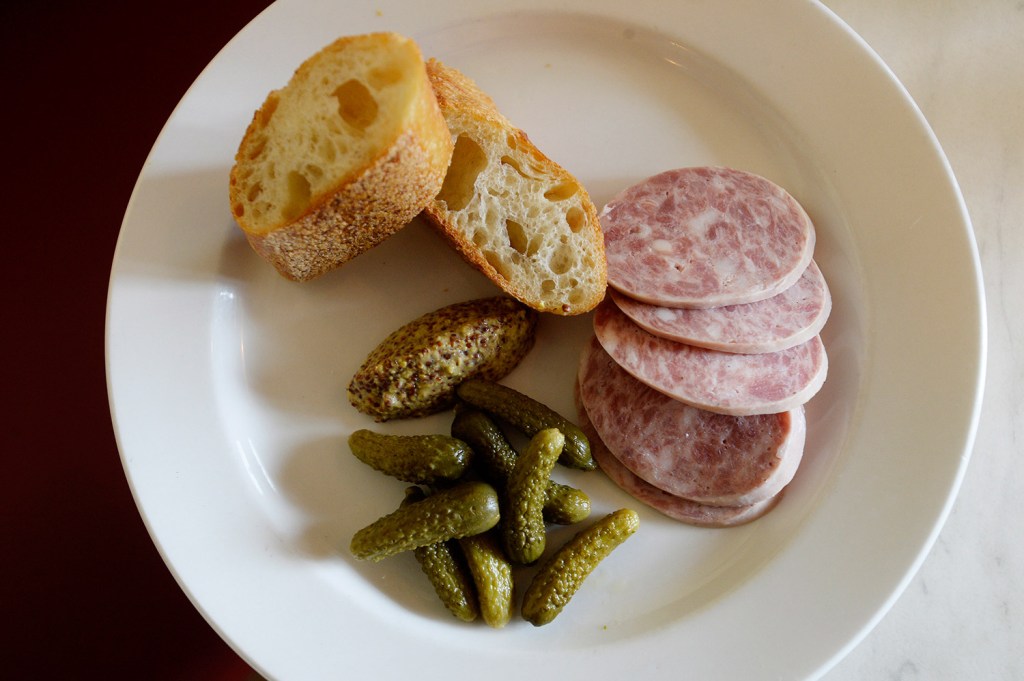
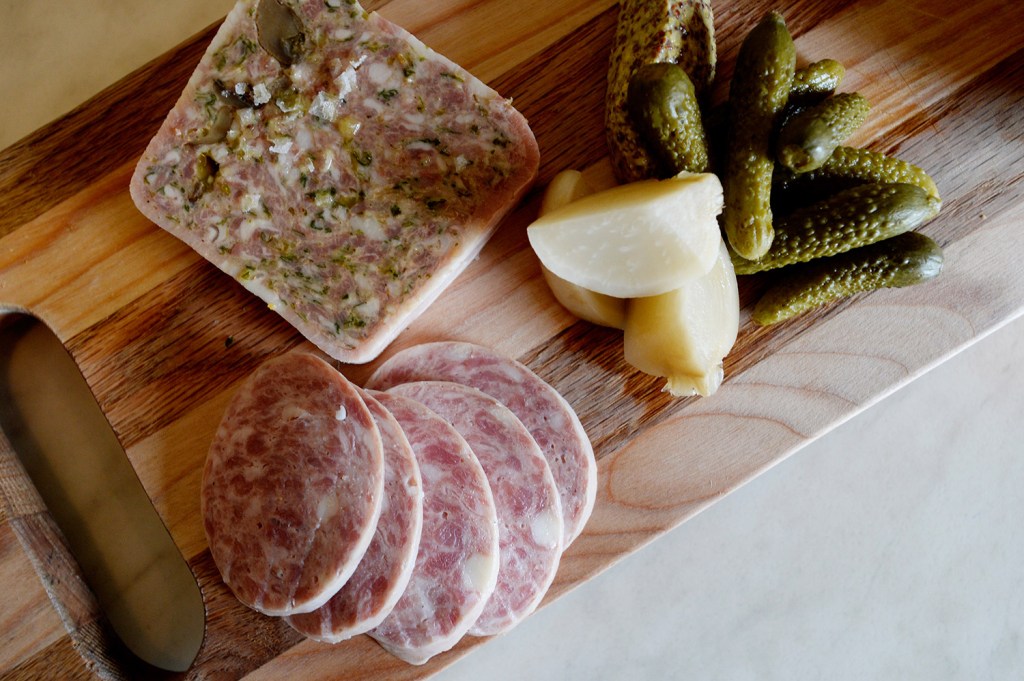
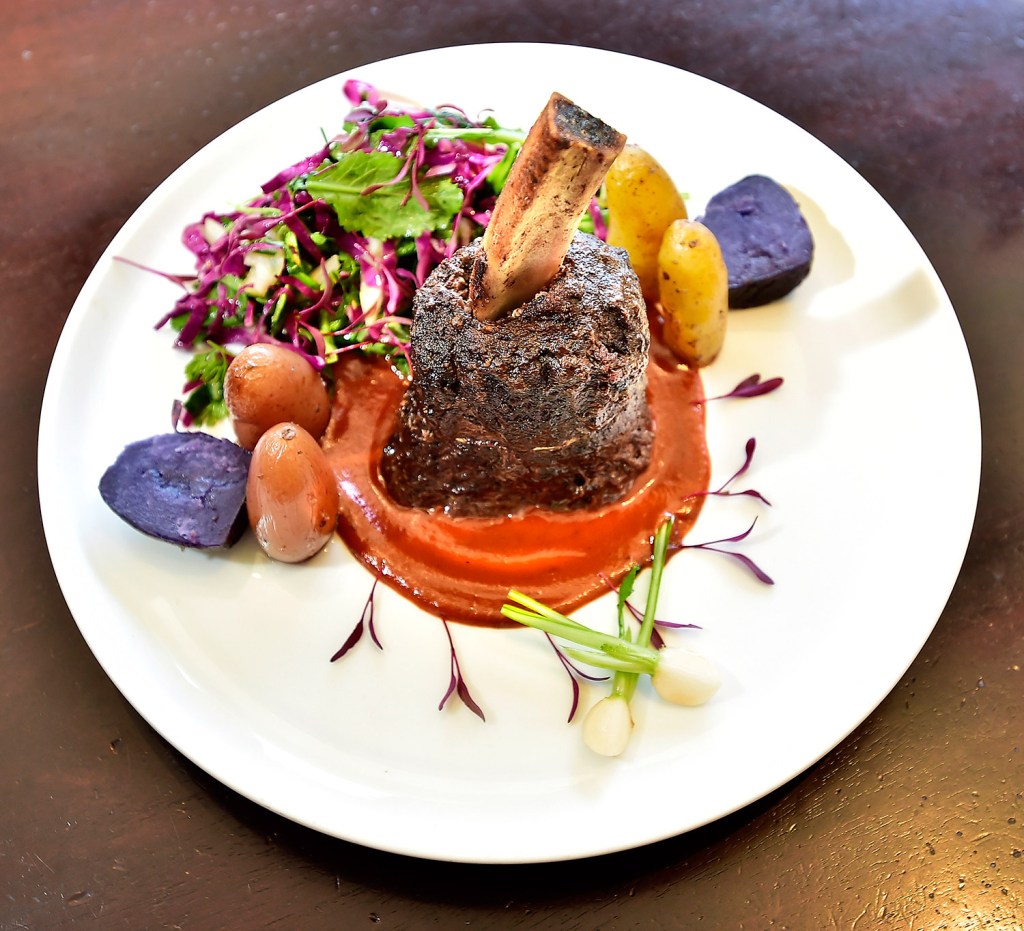
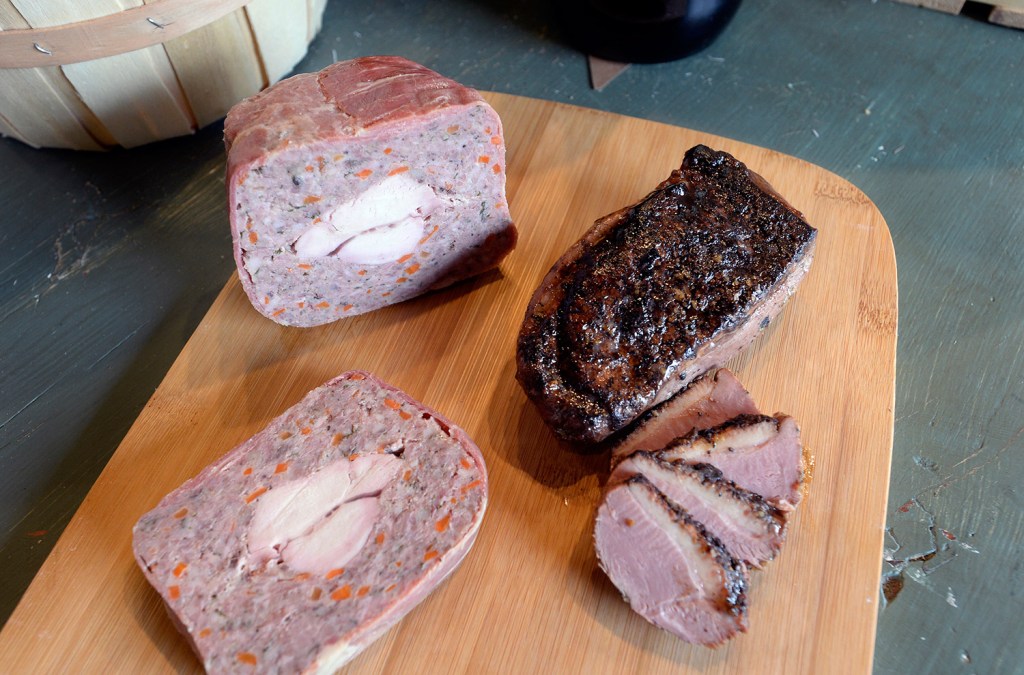
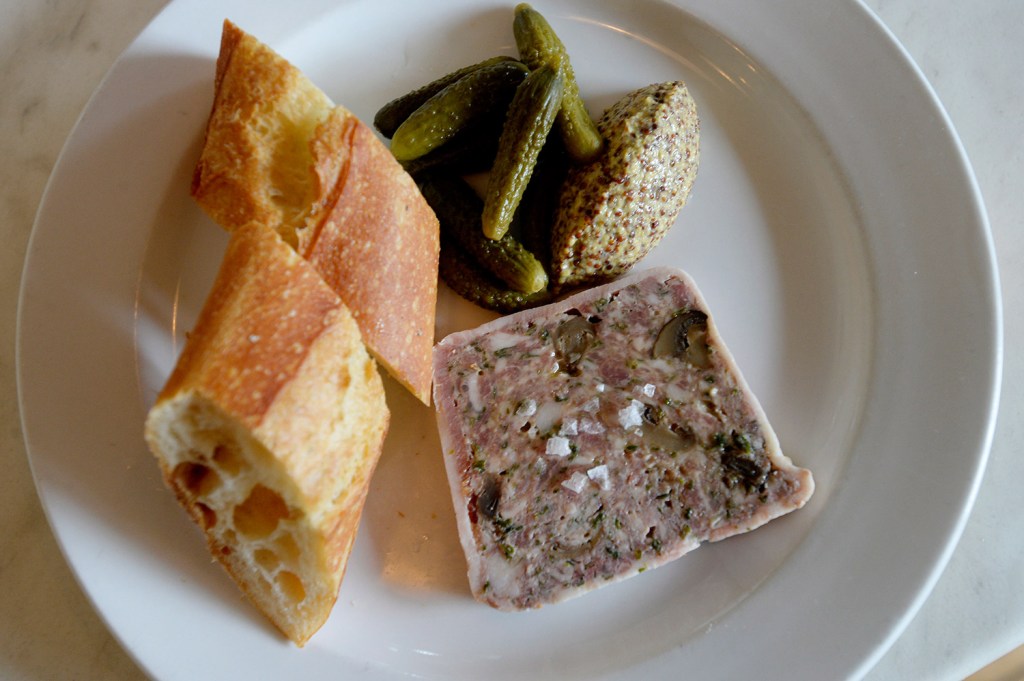

Success. Please wait for the page to reload. If the page does not reload within 5 seconds, please refresh the page.
Enter your email and password to access comments.
Hi, to comment on stories you must . This profile is in addition to your subscription and website login.
Already have a commenting profile? .
Invalid username/password.
Please check your email to confirm and complete your registration.
Only subscribers are eligible to post comments. Please subscribe or login first for digital access. Here’s why.
Use the form below to reset your password. When you've submitted your account email, we will send an email with a reset code.